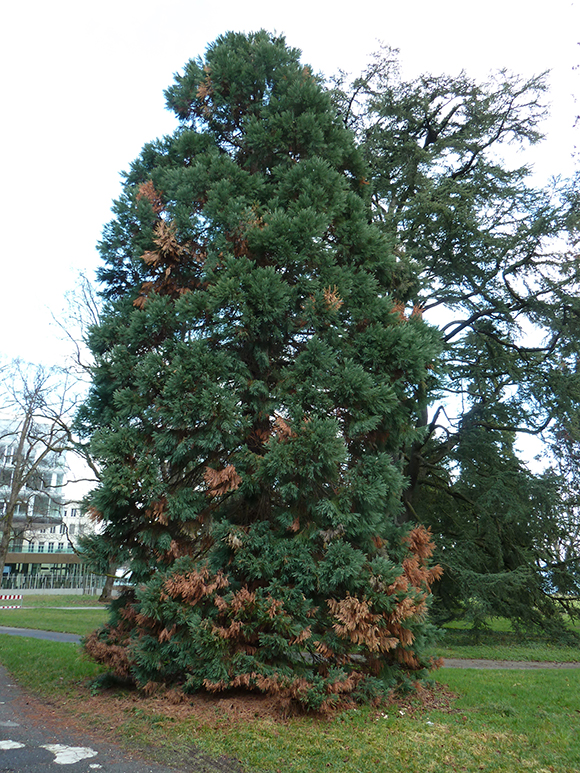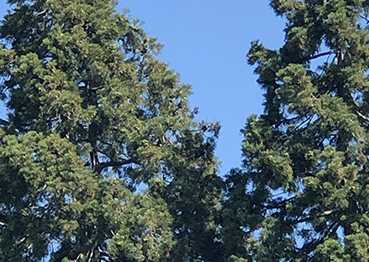

The Plants & Pathogens laboratory is, among others, in charge of diagnosing and monitoring diseases on ornamental plants in the canton of Geneva and proposing solutions to counter diseases.
An example: The issue of the decline of giant sequoias has been the subject of a study on the various factors involved and on the microorganisms implicated in this decline. The first sample taken from a diseased giant sequoia made it possible to isolate a fungus similar to but different from the one traditionally pointed out in the literature, namely Botryosphaeria dothidea. It was therefore decided to study other diseased sequoias in the canton, far from each other, to see if this discovery was an isolated case or if this fungus, Neofusicoccum parvum (Botryosphaeria parva), was much more frequently isolated on redwoods affected by bark canker.
Nine trees were tested at 5 different sites. Neofusicoccum parvum (Botryosphaeria parva), was isolated from each of the sites tested, while Botryosphaeria dothidea was found on only one of the trees studied. It is therefore the main agent in Geneva of the decline of giant sequoias.
Neofusicoccum parvum was then tested for pathogenicity on healthy redwood seedlings, which rapidly developed symptoms of the disease, unlike uninoculated controls. The fungus could be re-isolated in pure culture at the edge of the lesion, on artificially infected trees, proving that it was indeed responsible for the symptoms observed.
With global warming being recognized in the literature as an indisputable cofactor causing the decline of these giant trees, it was interesting to find a way to help these majestic trees resist attacks from so-called opportunistic fungi (which take advantage of a host weakened). With this in mind, young redwoods planted in a meadow and showing the onset of dieback, were designated for biostimulation trials. Microorganisms tested in our laboratory for their ability both to antagonize pathogenic fungi and for their ability to stimulate plant growth were inoculated under the crown of the trees concerned twice a year. The trials are still under study, but the first results are very encouraging: the crown has densified and the new year shoots are more vigorous on the trees that have received the microorganisms than on the untreated control.

Picture: Martine Haenzi, HEPIA
Project partner(s)
Project leader - team
François Lefort
(HEPIA)
